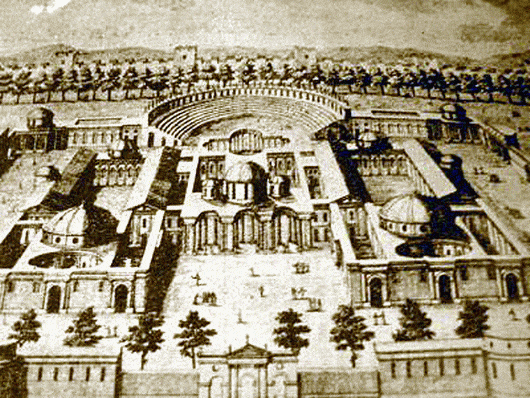In the town of Izmit (ancient name Nicomedia) in northwestern modern Turkey, local utilities are building a new office building. And they came across a whole cemetery underground. Archaeologists from the University of Marmara, led by Hussein Sami Ozturk, then set to work.
Scientists have excavated 37 graves dating from the II-IV century AD. One burial stands out: this is a stone sarcophagus, on which are well preserved not only the bas-reliefs with images of warriors, but also the inscription on the side panel. According to this inscription, Tziampo, the bodyguard of Emperor Diocletian, is buried in the sarcophagus. The full text in translation looks something like this: “I lived 50 years. I do not allow anyone to be buried in this tomb except my son Sever or my wife. I served nine years as a private in the cavalry, 11 years as a captain and ten years as a protector. If one dares to bury another in this tomb, he will pay 20 folis (a Roman and later a Byzantine bronze coin, which devalued strongly under Diocletian) in the fiscal (the emperor’s personal treasury) and ten in the city treasury. found the remains of two people. Scientists are now determining who is the second buried – the son or wife of Ciampo. What is interesting about the sarcophagus? It must be said that the history of the bodyguards of the first persons of the Roman Republic, and then of the empire, is an extremely complicated question: the sources contradict each other, the findings of archaeologists raise more questions than they answer. Interestingly, the first bodyguards of Roman consuls and generals were not Roman citizens. They were recruited from allied forces. It was believed that in this way they acted as a guarantor of the loyalty of their compatriots. These fighters were later transformed into the Praetorian Guard, whose warriors performed the same functions, and the name comes from the term “praetorium” – so called the location of the general’s tent in the army field camp. Gradually, the Praetorian Guard expanded, and it began to include auxiliary units, officials, translators, heralds, and many others. Octavian Augustus increased the number of Praetorians to nine thousand: nine cohorts per thousand men. Of course, such a number was not needed for bodyguards, but Octavian intended these people to maintain public order in Rome. It should be noted that the Praetorians of that time were recruited by the people of Italy, but not by the citizens of Rome.
It was later decided to take in these elite units not only locals on the Apennine Peninsula. Over time, the Praetorians began to take an active part in the political life of the Eternal City – and with force, which is natural for security. Sometimes they were involved in conspiracies, relying on military support. Sometimes they carried out coups themselves. For example, the emperors Caligula and Commodus were killed by Praetorians involved in conspiracies. And the Praetorian Macrinus personally organized a conspiracy, as a result of which the Emperor Caracalla was killed, and he himself sat on the throne. With such defenders, the emperors were not entirely safe. Therefore, under Emperor Gallienus, who ruled in 253-268, a separate detachment of the emperor’s bodyguards was created – protectors (from the Latin protector – “patron”, “protector”). We know little about this unit, but there is information in the sources about the Ciampo protector. This name is mentioned in connection with a man whom today we would call the adjutant of Emperor Diocletian, who ruled in 284-305. nine years, after which he received the title of “ordinarius” (captain), and after another 11 years he became a protector. The title protector, as is often the case, was obtained in two ways: for military merit or through personal connections or bribes. Because of the latter, the emperors had to “cleanse” the ranks of their close bodyguards from time to time, as they apparently did not want to raise another Praetorian. Apparently, Ciampo became a protector thanks to military merit. The discovery of the sarcophagus was the first time that archaeologists knew the exact name of the burial and had the opportunity to study the remains and burial gifts. Let’s just add that the Praetorian Guard was completely disbanded by Emperor Constantine the Great in 312, after the Battle of the Milvian Bridge. In this battle, Constantine was opposed by the Praetorians, who had previously brought the usurper Maxentius to power in Rome. Constantine ordered the destruction of the Praetorian camp as a “permanent nest of riots.”
Photo: The city of Nicamedia was founded by the Bithynian king Nicomedes I in 264 BC. e.
Note: This settlement was built on the site of the ancient city of Olbia. After 74 A.D. e. Nicemedia became the leading settlement of the Roman Bithynian province. In 286 a.d. e. Nicomedia became the eastern capital of the Roman Empire. From 324 AD e. it was the capital of the empire of Constantine. During the reign of Constantine, many Christian churches and various palaces were built in the city. This was the period of the highest flowering of Nicomedia. Nicomedia did not lose its significance even after Constantinople entered the political arena. In 1337, the Turks captured Nicomedia and rebuilt the city in their own way. The city was renamed Izmit.









